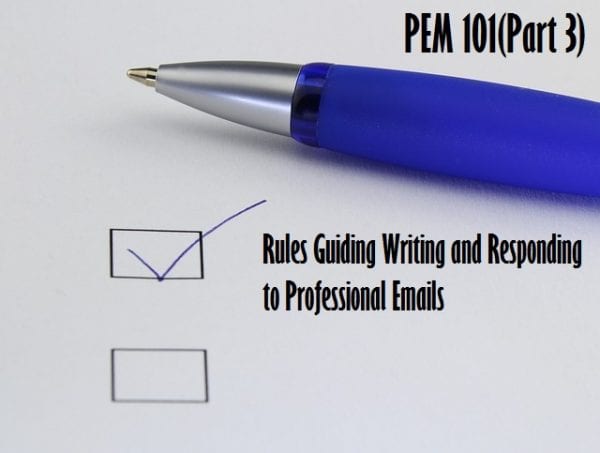An escalation email is a tad different from a regular complaint email. This is because while a complaint email is registering the grievance, an escalation email is well, escalating it. While both emails fall under the same spectrum, the method of handling them differs slightly. Slightly enough to make all the difference.
What is an escalation email? How is it written? What makes it different from a regular complaint email? In this article, we’re going to provide answers to all these questions and more importantly, we’re going to include some samples to help you escalate problems and produce results.
Escalation Email Meaning: What is an Escalation Email?
An escalation email is a concise message sent to highlight a critical issue or problem that requires urgent attention from higher-level authorities or management. It aims to expedite the resolution process by bypassing regular channels and bringing the matter to the attention of individuals who have the power and authority to address it promptly and effectively.
In most cases, escalation emails aren’t written by customer support; they’re written and sent internally among staff in a company. Regardless of who sends the exclamation email, the process remains the same.
An escalation email is never the first email or first correspondence, it’s usually the second or latter emails. Why’s this? When you reach out to a company or an organization, you’re hoping that your issue is treated with priority and handled as smoothly as possible. When the opposite becomes the case, then you escalate the case.
Usually, an escalation uses a different medium of communication than the last. This means if you first reach out to a company via phone call or social media, the next step to escalate the problem would be to email the company and CC the right individuals.
How to Write Cancellation Letters for Various Instances (Samples Included)
How to Write Escalation Emails (Samples Below)
We’ve explained what escalation emails are and what differentiates them from regular complaint emails. In this section of this article, we’re going to discuss how to effectively write them to ensure something gets done and a resolution is achieved.
NB: Kindly note that the tips given here can be used in any escalation email, from in-house communication to customer-company communication.
Exclude The Pleasantries
In some instances, excluding the pleasantries may be considered rude, but this is an exception. You need to make the recipient know about your displeasure from the get-go. If they don’t know about the grievance you’re tabling, they’re about to.
Do not include the “I hope this email finds you well,” after your salutation – go straight to the point of the email.
Highlight Your History with The Company
If you’re a customer, in this section of the email you can highlight how long you’ve used the company’s service and how the disservice has affected you. You can decide to give a specific duration or not.
If you’re sending an escalation in a company for whatever reason and you feel the recipient may not know you personally, you could also include a brief history of your employment in this section of your email. If you’re emailing someone who may be familiar with you and the case, you could decide to opt-out of this part and go straight to whatever you need escalating.
Explain the Series of Communications and the Response Gotten
This is a crucial part of your email as it proves to the recipient that this isn’t the first time you’re reaching out in search of a solution. In your email, include a detailed explanation and proof of communication (e.g. screenshots) of how many times you’ve reached out to the company, through whichever channels, and the response you received.
This forms the backbone of your escalation email and gives the recipient the necessary information they need to make your case a priority and get it solved.
If you have any reference IDs from previous communications, you should ensure they’re included in this section of the email as it helps the handler understand your problems and the solutions that have been attempted.
If this isn’t a customer interaction email, you can decide to not include the screenshots. Merely stating who you reached out to and their response suffices.
Outline Your Grievances
You may have done this before in subsequent interactions, but it should still be done in this email. When stating what the problem is, ensure to include all necessary facts and do it as professionally as possible. You may be frustrated, but don’t let this be evident in your correspondence.
For complex problems, ensure to be as detailed as you can. This is because it helps the customer rep. know how to proceed with providing a solution.
When outlining your grievances, ensure to include any solution you’ve tried before. If during previous correspondence you were offered multiple solutions and none seemed to fix the problem, make sure you include the solutions you tried and their results. This way the rep knows the solutions you’ve attempted and the ones you’ve not.
State The Actions You’re Willing to Take
If you intend to escalate the issue further, which could mean going the legal route, ensure to include this in your email as well. State a timeframe for resolution and if the problem isn’t solved within that period you would be taking legal action.
Other actions don’t necessarily have to be legal, it could be as simple as you closing the account. If this is the case, ensure to include this as well.
State Your Demands Assertively
When writing your escalation letter your tone must be assertive. This doesn’t mean using unprofessional language or being rude, it simply means stating your demands boldly.
Examples of words like this include, “we demand that…” “We ask that you…” These are some of the ways you can be assertive in your email.
Tag the Appropriate Authorities If Applicable
In some cases, the appropriate authorities can be higher-ranking members of the organization. If you’re able to get your hands on these emails addreses, ensure to tag them in the emails and address the emails specifically to them while detailing your previous fruitless conversations.
In other cases, the appropriate authorities can be governing bodies that specialize in dealing with issues like these. If there are bodies like this that take up these issues, ensure to tag them or threaten to involve them. This will make the entire escalation process faster.
Follow Professional Email Etiquette
While you may be frustrated and interested in nothing but a resolution, you need to ensure your email follows the proper etiquette. In most cases, this has no bearing on how your issue is handled, but it should be followed nonetheless.
How to Write a Refund Request Letter and Samples
Please Escalate This Issue Email Sample
Subject: Urgent: Escalation of Critical Issue - [Brief Description] Dear [Recipient's Name], I hope this email finds you well. I am writing to bring your immediate attention to a pressing matter that demands urgent action. [Provide a concise summary of the issue, including its impact on the project, team, or organization]. Despite my efforts to address it through regular channels, the situation remains unresolved, posing significant risks [or any other relevant information]. Given the urgency and potential consequences, I kindly request your intervention and guidance to resolve this matter promptly. I am available to provide any additional information or discuss the issue further at your convenience. Thank you for your immediate attention to this pressing matter. Sincerely, [Your Name] [Your Designation/Position] [Contact Information]
How to Escalate Politely Email Sample
Subject: Seeking Your Assistance - Urgent Escalation Required Dear [Recipient's Name], I hope this email finds you well. I wanted to reach out personally and request your kind assistance with an urgent matter that has arisen. Despite my best efforts, the situation remains unresolved, and its impact is becoming increasingly critical. I kindly seek your guidance and intervention to help address this issue promptly. Your support in this matter would be greatly appreciated. Thank you for your attention and consideration. Warm regards, [Your Name]
Can You Please Escalate This Issue Email Sample
Subject: Requesting Immediate Escalation - Assistance Needed Dear [Recipient's Name], I hope this email finds you well. I am writing to seek your urgent assistance in escalating a critical issue that requires immediate attention. Despite my efforts to resolve it through regular channels, the situation persists. Your intervention and guidance are crucial in resolving this matter promptly. Your support in addressing this issue would be greatly appreciated. Thank you for your prompt attention. Best regards, [Your Name]
Escalation Email Example One
Dear Jane Foster, I’m emailing from Woculus concerning the product that was delivered to our offices two weeks ago. We’ve been a loyal customer of your brand for the last 3 years, unfailinlyg purchasing stationary equipment ever quarter in this span. On this 15th of March, your company delivered 20 boxes of pens and 25 boxes of drawing sheets. Upon delivery, we realized that the inks from the pen had spilled on the sheets and had rendered them useless. We noticed this even before the delivery agents left and we told them but they made it clear to us they were merely contractors and handling returns did not fall under their purview. Since the delivery, we have since reached out to your customer service department via phone and email and have been met with either static silence or baseless promises. We demand a full refund or a replacement of these goods within the next 7 days or we will be forced to take legal action. We have included pictures and delivery documents in this email. Kindly ensure this disservice is rectified. Sincerely, James Parker, Managing Director Woculus Inc.
Escalation Email Example Two
Hi Veronica Daytona, My name is James Bay and I am the Head of IT at Woculus. Over the last 3 years, we have dutifully used your company’s services and have had a favorable experience. However, on the 3rd of May, someone from your company, Joy Pence reached out to us and informed us of scheduled maintenance that would last 24 hours over the weekend. Upon returning to work the following week, we discovered we still were unable to access your platform. I personally reached out to Joy Pence (proof attached) and informed her of this issue but they reassured me that everything was fine on your end and instructed us to restart the device. It’s been 4 days since my last interaction with Joy and it’s only deteriorated further. We have 18 branches scattered across the country and all 18 of them use your platform. Out of this 18, 9 are currently experiencing the same problems. If your service is not up and running within the next 72 hours, we will make sure all 18 of our branches stop using your service. Thank you for your time. Sincerely, James Bay Head of IT, Woculus.
Conclusion
When writing to escalate a situation, ensure to include receipts from previous communications. Also, in cases where you can, do not neglect to include higher-ranking reps. We’ve included some samples to help you write better escalation emails.






